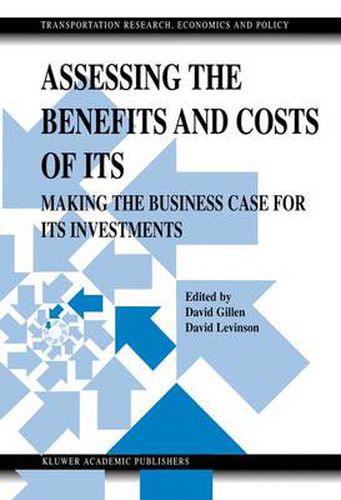Readings Newsletter
Become a Readings Member to make your shopping experience even easier.
Sign in or sign up for free!
You’re not far away from qualifying for FREE standard shipping within Australia
You’ve qualified for FREE standard shipping within Australia
The cart is loading…






This title is printed to order. This book may have been self-published. If so, we cannot guarantee the quality of the content. In the main most books will have gone through the editing process however some may not. We therefore suggest that you be aware of this before ordering this book. If in doubt check either the author or publisher’s details as we are unable to accept any returns unless they are faulty. Please contact us if you have any questions.
The introduction of Intelligent Transportation Systems (ITS) projects concerns and confuses the transportation planners, policy-makers, and professionals who seek to evaluate them. Until recently, most assessments have considered the various new technologies from an engineering point of view. But now governments and debt markets want to have the business case established for these sizable investments. It is no longer enough to claim there are benefits to ITS and to use simulation models to support this case. Decision-makers want real analysis with real data to help make decisions regarding where and what should be funded. The 17 chapters in this book, which evolved from a conference on measuring the contributions of ITS sponsored by the California Department of Transportation in February 2002, examine the costs and benefits of ITS in an economic and business policy context. Section 1 examines the broad theme of how and what ITS contributes to the economy and how one makes a business case for ITS. Section 2 includes three chapters on ITS applications in mass transit. Section 3 explores ITS applications in the automobile/highway system. Section 4 considers integrative issues includin
$9.00 standard shipping within Australia
FREE standard shipping within Australia for orders over $100.00
Express & International shipping calculated at checkout
This title is printed to order. This book may have been self-published. If so, we cannot guarantee the quality of the content. In the main most books will have gone through the editing process however some may not. We therefore suggest that you be aware of this before ordering this book. If in doubt check either the author or publisher’s details as we are unable to accept any returns unless they are faulty. Please contact us if you have any questions.
The introduction of Intelligent Transportation Systems (ITS) projects concerns and confuses the transportation planners, policy-makers, and professionals who seek to evaluate them. Until recently, most assessments have considered the various new technologies from an engineering point of view. But now governments and debt markets want to have the business case established for these sizable investments. It is no longer enough to claim there are benefits to ITS and to use simulation models to support this case. Decision-makers want real analysis with real data to help make decisions regarding where and what should be funded. The 17 chapters in this book, which evolved from a conference on measuring the contributions of ITS sponsored by the California Department of Transportation in February 2002, examine the costs and benefits of ITS in an economic and business policy context. Section 1 examines the broad theme of how and what ITS contributes to the economy and how one makes a business case for ITS. Section 2 includes three chapters on ITS applications in mass transit. Section 3 explores ITS applications in the automobile/highway system. Section 4 considers integrative issues includin